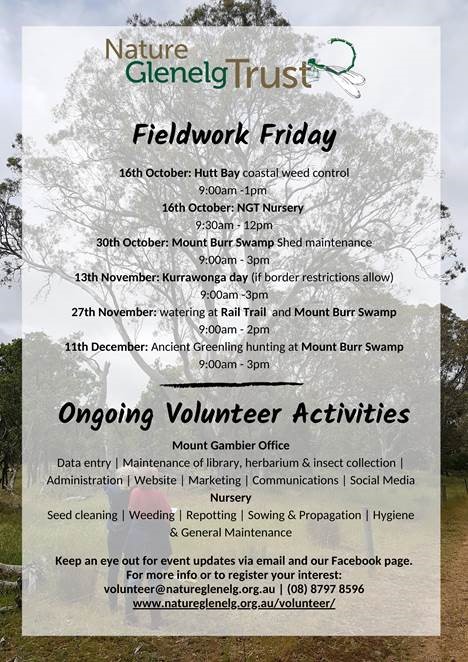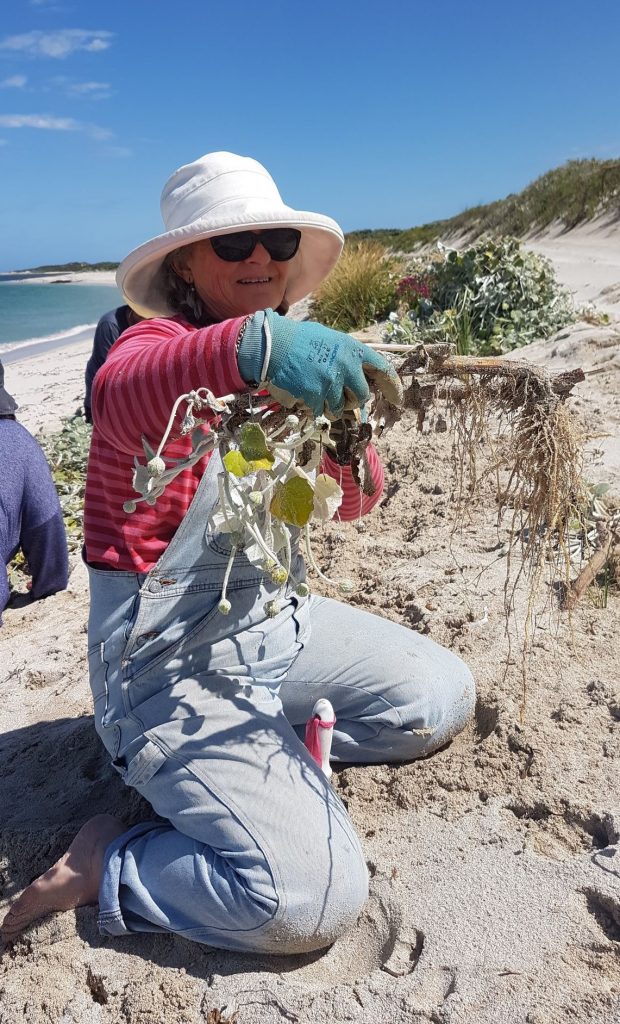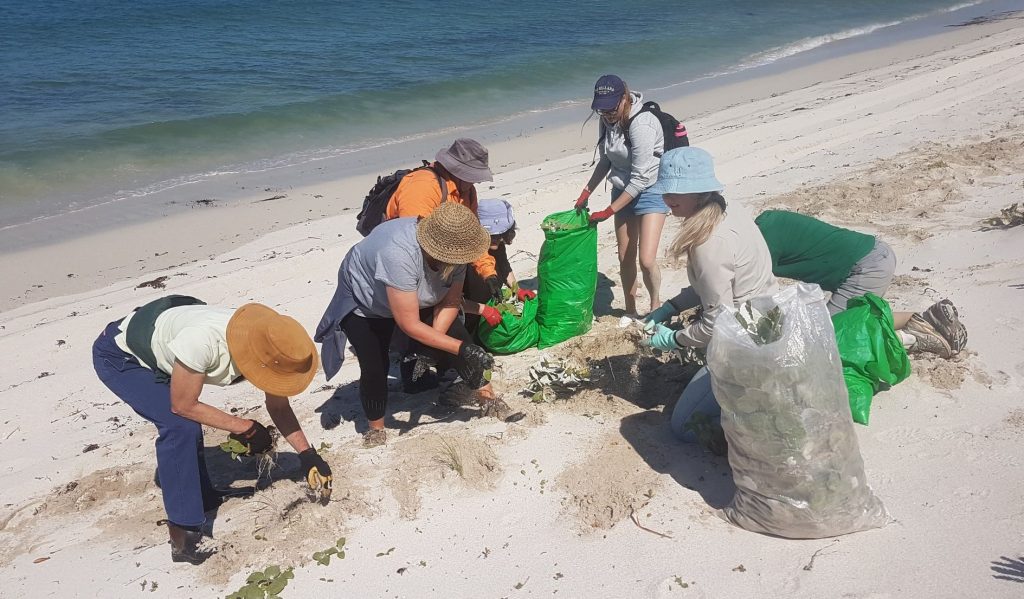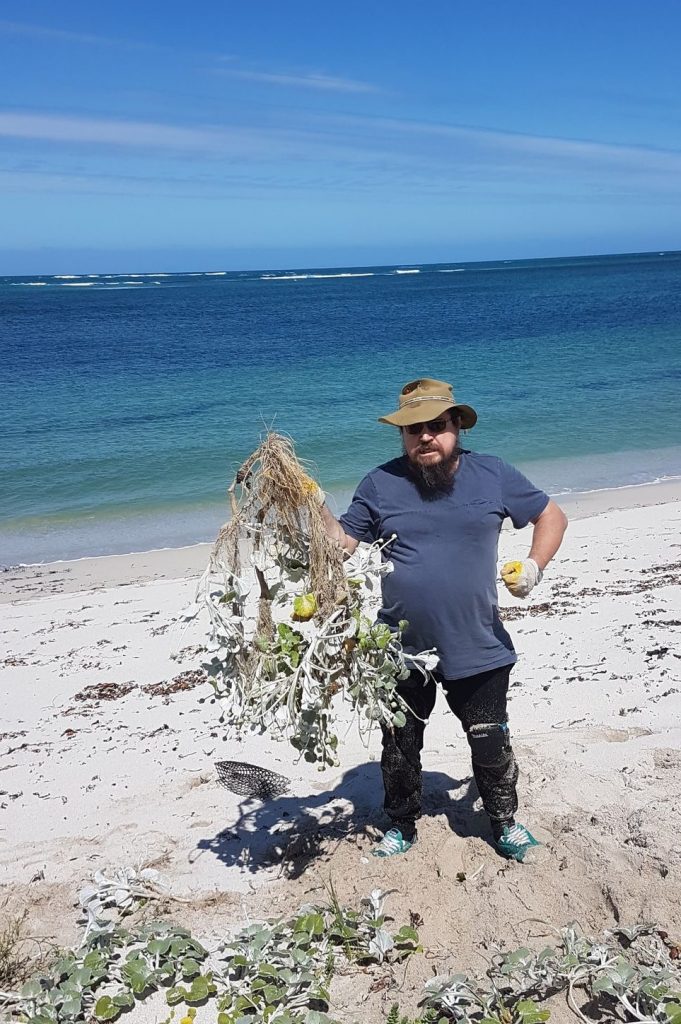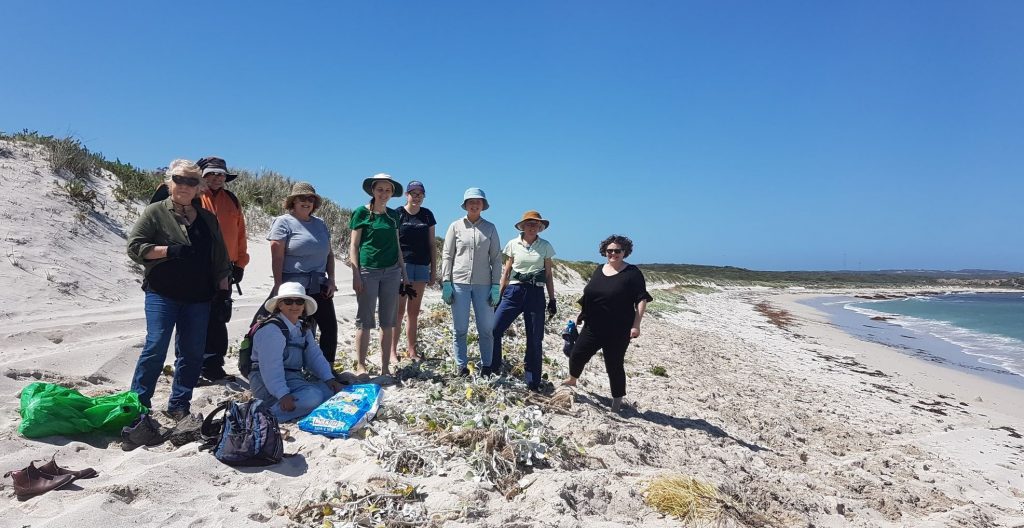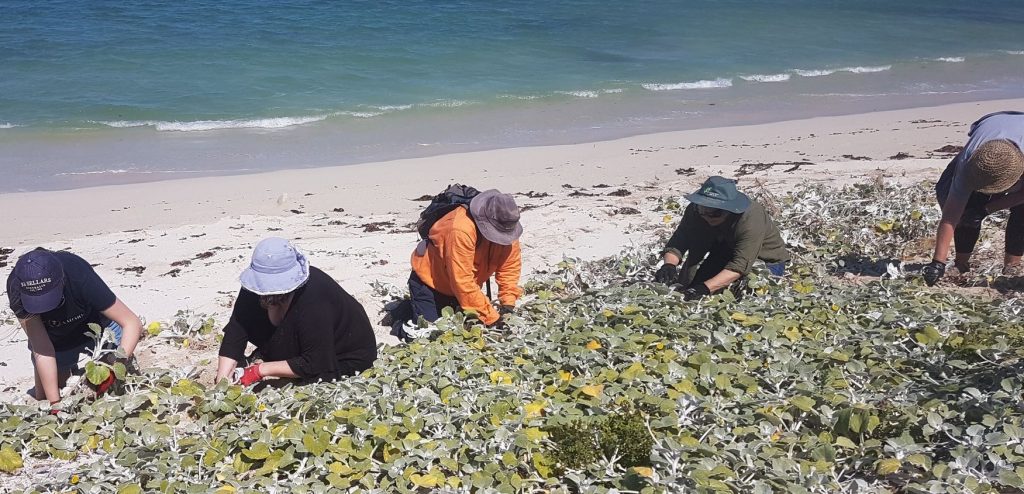Volunteers tackle coastal weeds at Hutt Bay
As part of our Fieldwork Friday program over the past month or so, volunteers have been tackling Arctotheca populifolia at NGT’s Hutt Bay Wetlands Reserve. Like many weeds in our region, this plant is native to South Africa and it goes by many names including Cape Daisy, Cape Beach Daisy, Sea Pumpkin, and South African Beach Daisy. This weed changes the structure of the beach and negatively impacts shorebird nesting habitat, so we’re hoping to keep on top of it at Hutt Bay, as it is not yet well-established along this part of the coast. Here are a few pics of our volunteers working tirelessly on the day.
Like other coastal weeds, such as Marram grass, Cape Daisy is believed to have been deliberately introduced for dune stablisation. Introduced species often behave differently away from their native distribution (and natural predators). Nevertheless, in comparing plants of this species from four locations in Victoria and NSW to the original source site, researchers have found unexpected differences in the plant here in Australia. Firstly, it grows in a more prostrate fashion compared to upright in South Africa. In addition to that, leaves are smaller and retain their juvenile shape.
Wind deposits sand around Cape Daisy plants and it is held in place by fibrous and intertwined runners; over time sand builds up forming hummocks, changing the shape of the beach. Certain species, like the vulnerable Hooded Plover, rely on the upper areas of open sandy beaches to nest.
Currently running every second Friday, our Fieldwork Friday program is a chance for volunteers to get involved in various aspects of NGT’s work. With October named National Mental Health Month, we remember that both the social and environmental aspects of volunteering with NGT can be big positives for mental and physical health. Check out our Fieldwork Friday program for the remainder of 2020 below and get in touch if you’d like to join us – we’d love to see you soon!
